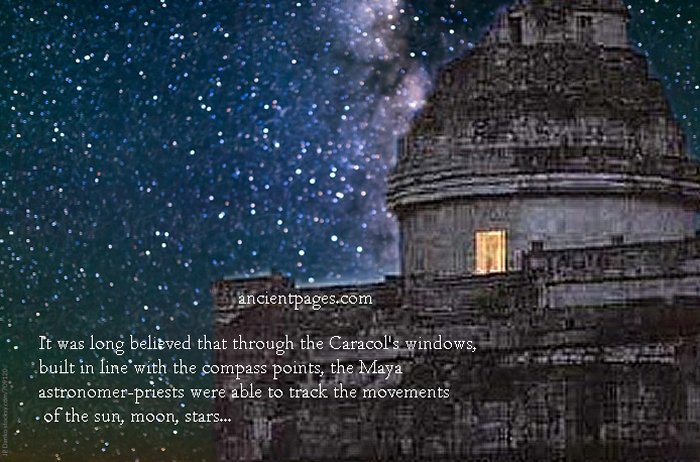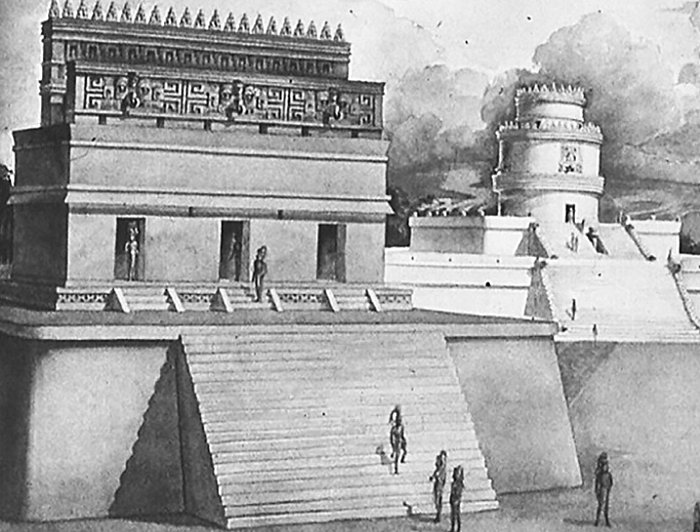Mysterious El Caracol At Chichen Itza: What Did Maya Astronomer-Priests Observe In The Sky?
A. Sutherland - AncientPages.com - Ancient astronomical observatories can be found on both American continents and elsewhere. Ancient people who built ziggurats, temples, and observatories, aligned them to exact celestial orientations and carefully observed the sky, understood celestial movements, cycles of the moon, sun, stars.
The Aztecs worshiped the Pleiades, and the Maya had a cult of Venus ("the morning star"). Despite the lack of advanced technology, the Mayans were great astronomers. Their observations were so accurate that they could predict solar and moon eclipses, describe the movement of planets in the solar system and create very precise calendars.
A Mayan pyramid, El Castillo, has windows in the top of the pyramid, aligned with sunrises at the solstices and alignments with the sunset points of the equinoxes.
It is located in the pre-Columbian city of Chichen Itza, one of the most famous Maya cities, which – like Uxmal - flourished around 800 AD. However, Chichen Itza still had its influence while other Mayan cities were abandoned and ruined.
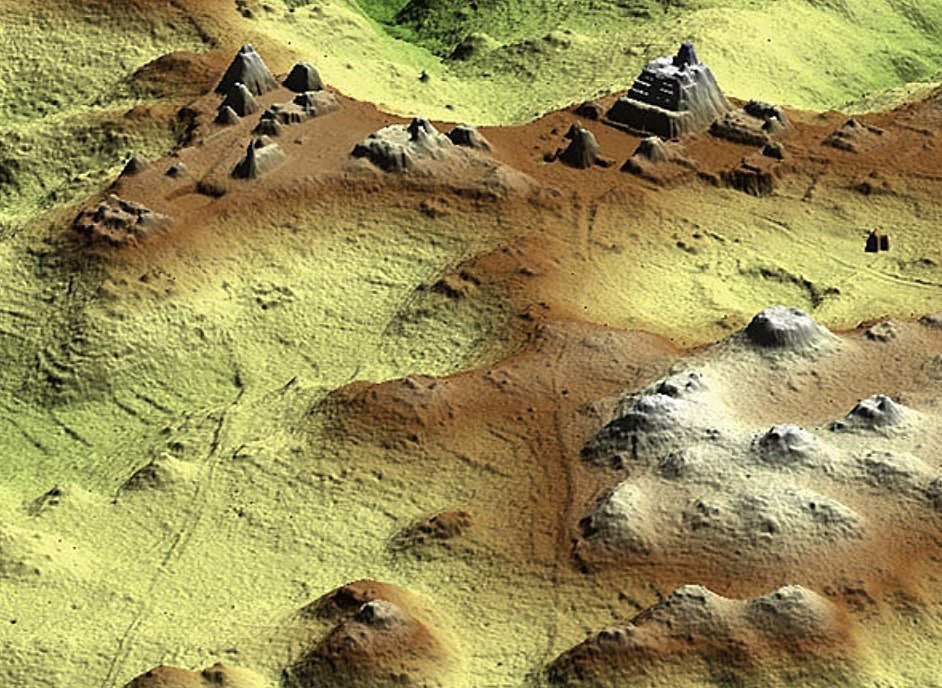 A 2.5 D LiDAR image of the Caracol epicenter looking northwest. Source www.caracol.org
A 2.5 D LiDAR image of the Caracol epicenter looking northwest. Source www.caracol.org
Also at Chichen Itza, there is another example of advanced Mesoamerican astronomy of old times. It is the 74-foot high building nicknamed ‘El Caracol’ ("Snail"), which is believed to be an ancient observatory.
Its name refers to the spiral shape of the stairs (leading to the top of the observatory) and located inside the El Caracol’s circular tower, with orientations intentionally designed to mark important alignments with Sun and planet Venus (recorded in the Dresden Codex), and the setting sun at the equinox.
There is the solstice diagonal of the upper platform, the zenith passage sunset, and the Venus northernmost setting.
It is known that El Caracol was a monument related to Kukulcan (Quetzalcoatl), who in the 9th-century texts at Chichen Itza was never identified as human and artistic representations depicted him as a ‘Vision Serpent’ entwined around the figures of nobles.
Not much more it is known for sure about El Caracol's ancient past. Many researchers have speculated on the purpose of the structure and its precise function.
It was long believed that through the windows, built-in line with the compass points, the Maya astronomer-priests were able to track the movements of the sun, moon, and stars. Many windows of El Caracol are located so that they allow observation of certain phenomena in the sky, such as the setting sun during the spring equinox.
Indeed, the structure looks like an observatory, but there is no ancient evidence attesting its use.
“… while stellar observations might have been important, there are too many possibilities – too many bright stars – to place much credence on any apparent stellar alignments that have been found.” (Clive L.N. Ruggles, Ancient Astronomy).
The Caracol Tower seen from the Casa Colorada. (T. Proskouriakoff, 1946, An Album of Maya Architecture)
The two of the three surviving windows were perfectly placed for observing Venus; however, the Maya also focused much on observations of the Moon and what else? From the top of the prehistoric El Caracol, the whole sky is clearly seen, because it is not covered by other buildings or trees of the lush forest growing on the Yucatán peninsula.
“The most probably the mysterious Caracol had nothing to do with astronomical observations at all…” according to Ruggles.
Composite 3D laser scan image of El Caracol from above. Image credit: CyArk - CC BY-SA 3.0
Or perhaps it was designed to study a multitude of astronomical phenomena, including the Moon and, especially, Venus.
Did Ancient Maya Farmers Need Sophisticated Caracol For Agricultural Activities?
Apparently, they did not. “… a simple sun clock, a gnomon, would suffice to provide enough daily and seasonal information,” Zecharia Sitchin writes in his book “The Lost Realms,”
“It is customary among scholars to attribute ancient man's astronomical endeavors to the needs of an agricultural society for a calendar telling it when to sow and when to reap. This explanation has been taken for granted far too long. A farmer tilling the land year after year can judge the change of seasons and the coming of rains better than an astronomer…”
According to Sitchin, primitive societies surviving on agriculture have been found in remote parts of the world. The fact remains that these people have lived and fed themselves for generations without astronomers and a precise calendar.
Written by – A. Sutherland - AncientPages.com Senior Staff Writer
Copyright © AncientPages.com All rights reserved. This material may not be published, broadcast, rewritten or redistributed in whole or part without the express written permission of AncientPages.com
Expand for referencesMore From Ancient Pages
-
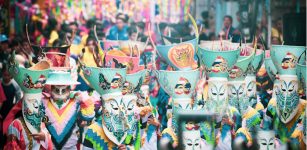 Why Is The Hungry Ghost Festival Celebrated In August?
Ancient Traditions And Customs | Aug 12, 2019
Why Is The Hungry Ghost Festival Celebrated In August?
Ancient Traditions And Customs | Aug 12, 2019 -
 Calçoene – Amazon Stonehenge And The Mysterious Amapán Megalithic Culture
Civilizations | Feb 14, 2018
Calçoene – Amazon Stonehenge And The Mysterious Amapán Megalithic Culture
Civilizations | Feb 14, 2018 -
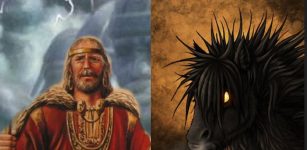 Pooka: Solitary Spirit And Not Entirely Benevolent Prankster In Irish Folklore
Celtic Mythology | Jun 4, 2016
Pooka: Solitary Spirit And Not Entirely Benevolent Prankster In Irish Folklore
Celtic Mythology | Jun 4, 2016 -
 Pomegranate-Liked Seeds Found In Ancient Tomb Dated To Han Dynasty
Archaeology | Feb 22, 2017
Pomegranate-Liked Seeds Found In Ancient Tomb Dated To Han Dynasty
Archaeology | Feb 22, 2017 -
 Major Underwater Archaeological Find On The Western Coast Of Sicily – Artifacts From The Battle Of The Egadi Islands?
Archaeology | Sep 11, 2023
Major Underwater Archaeological Find On The Western Coast Of Sicily – Artifacts From The Battle Of The Egadi Islands?
Archaeology | Sep 11, 2023 -
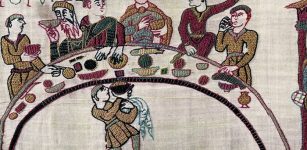 Bayeux Tapestry: Original Location Of Remarkable Romanesque Art – Finally Solved
Archaeology | Oct 26, 2019
Bayeux Tapestry: Original Location Of Remarkable Romanesque Art – Finally Solved
Archaeology | Oct 26, 2019 -
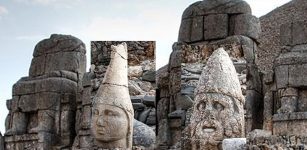 Mount Nemrut: ‘Throne Of The Gods’ – Mysterious Royal Tomb Surrounded By Gigantic Sculptures
Civilizations | Nov 16, 2018
Mount Nemrut: ‘Throne Of The Gods’ – Mysterious Royal Tomb Surrounded By Gigantic Sculptures
Civilizations | Nov 16, 2018 -
 Rare Gilded Mask Discovered On Mummy Of Ancient Egyptian Priest Serving Sky Goddess Mut
Archaeology | Jul 17, 2018
Rare Gilded Mask Discovered On Mummy Of Ancient Egyptian Priest Serving Sky Goddess Mut
Archaeology | Jul 17, 2018 -
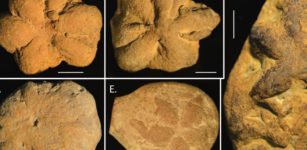 Mysterious Ancient Star-Shaped ‘Fossil’ Baffles Scientists – What Is It?
Archaeology | Feb 27, 2023
Mysterious Ancient Star-Shaped ‘Fossil’ Baffles Scientists – What Is It?
Archaeology | Feb 27, 2023 -
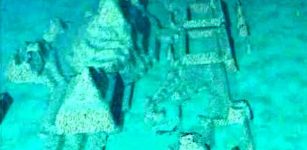 Is A Gigantic Ancient City Hidden Underwater In The Bermuda Triangle?
Featured Stories | Jul 8, 2014
Is A Gigantic Ancient City Hidden Underwater In The Bermuda Triangle?
Featured Stories | Jul 8, 2014 -
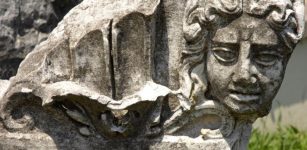 Ancient City Of Prusias ad Hypium And Ruins Of City’s Theater Known As ’40 Steps’
Archaeology | Mar 13, 2020
Ancient City Of Prusias ad Hypium And Ruins Of City’s Theater Known As ’40 Steps’
Archaeology | Mar 13, 2020 -
 A 2,700-Year-Old Urartians’ Ayanis Castle And Haldi Temple – Soon An Open-Air Museum
Archaeology | Aug 10, 2020
A 2,700-Year-Old Urartians’ Ayanis Castle And Haldi Temple – Soon An Open-Air Museum
Archaeology | Aug 10, 2020 -
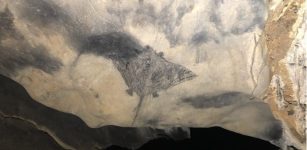 New Dating Of Intriguing Cave Art Reveals History Of Puerto Rican People
Archaeology | Oct 19, 2023
New Dating Of Intriguing Cave Art Reveals History Of Puerto Rican People
Archaeology | Oct 19, 2023 -
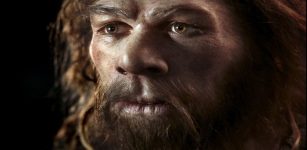 People With Neanderthals’ Pain-Related Gene May Suffer More On A Daily Basis
DNA | Jul 27, 2020
People With Neanderthals’ Pain-Related Gene May Suffer More On A Daily Basis
DNA | Jul 27, 2020 -
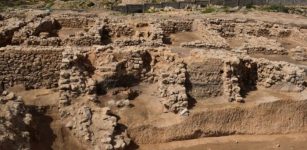 Ancient Greco-Roman Amphora Workshop Discovered In Alexandria, Egypt
Archaeology | Apr 17, 2022
Ancient Greco-Roman Amphora Workshop Discovered In Alexandria, Egypt
Archaeology | Apr 17, 2022 -
 Gallic Leader Vercingetorix In Victorious Battle Of Gergovia, 52 BC
Featured Stories | Jan 23, 2017
Gallic Leader Vercingetorix In Victorious Battle Of Gergovia, 52 BC
Featured Stories | Jan 23, 2017 -
 Mysterious Pyramid-Shaped Tomb Discovered In China
Archaeology | Mar 15, 2017
Mysterious Pyramid-Shaped Tomb Discovered In China
Archaeology | Mar 15, 2017 -
 Triumphal Arch Of Roman Emperor Constantine And His Great Vision
Featured Stories | Jul 12, 2017
Triumphal Arch Of Roman Emperor Constantine And His Great Vision
Featured Stories | Jul 12, 2017 -
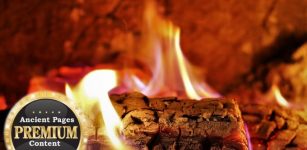 Unexplained Accounts Of Mysterious Fires – ‘Burning’ Questions Remain Unanswered – Part 1
Featured Stories | Aug 2, 2019
Unexplained Accounts Of Mysterious Fires – ‘Burning’ Questions Remain Unanswered – Part 1
Featured Stories | Aug 2, 2019 -
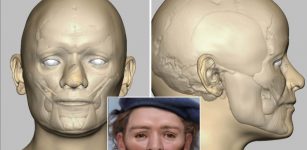 Face-To-Face Encounter With Young Scottish Soldier Who Lived And Died Over 300 Years Ago
Archaeology | Dec 23, 2017
Face-To-Face Encounter With Young Scottish Soldier Who Lived And Died Over 300 Years Ago
Archaeology | Dec 23, 2017

